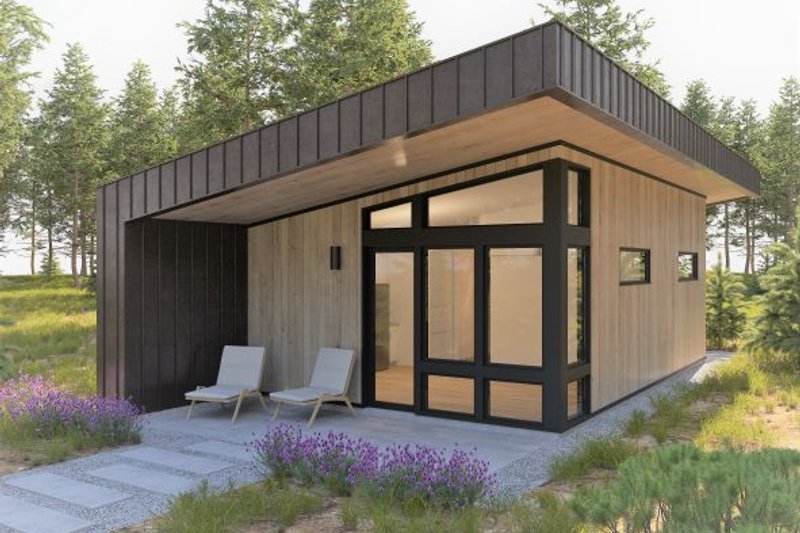California ADU: Exploring the Benefits and Opportunities for Homeowners

In recent years, Accessory Dwelling Units (ADUs) have become a significant trend in California’s real estate landscape. These self-contained living spaces, often referred to as granny flats or in-law suites, provide homeowners with the flexibility to create additional rental income, accommodate extended family, or even enhance the value of their property. With California’s ongoing housing crisis, the demand for ADUs has only grown, making them an appealing option for both homeowners and investors. This article will delve into the benefits of building an ADU in California, the regulatory environment, and how homeowners can take advantage of this opportunity.
The Rising Popularity of ADUs in California
California has long faced a housing shortage, with high demand for homes and limited availability, especially in urban areas. In response to this crisis, the state has been actively promoting the development of ADUs. These units offer a viable solution to the housing issue by increasing density without altering the character of neighborhoods. The state’s push to make it easier for homeowners to build ADUs has led to numerous legislative changes in recent years. These changes have streamlined the approval process, reduced fees, and provided incentives to encourage ADU construction.
One of the driving factors behind the popularity of ADUs in California is their versatility. Whether as a rental unit, a home office, or a space for elderly relatives, an ADU provides homeowners with a cost-effective way to maximize the potential of their property. With the right design, an ADU can add significant value to a home, making it a worthy investment.
Benefits of Building an ADU in California
For California homeowners, building an ADU offers a range of benefits. One of the most appealing advantages is the potential for additional income. Renting out an ADU provides homeowners with a steady stream of revenue, which can help cover mortgage payments, property taxes, or other expenses. With California’s high rental demand, especially in cities like Los Angeles, San Francisco, and San Diego, the rental income potential from an ADU is substantial.
Another benefit is the increased property value. Homes with ADUs are often valued higher than comparable properties without them. This added square footage, whether used for rental purposes or as additional living space, makes a property more attractive to potential buyers. In a
competitive real estate market, an ADU can make a significant difference in a property’s marketability and selling price.
ADUs also offer a unique opportunity for multigenerational living. Many families in California are turning to ADUs as a way to accommodate elderly parents, adult children, or other relatives who need their own space but want to remain close by. The self-contained nature of an ADU allows for privacy while still maintaining proximity to family members, creating a living arrangement that can benefit everyone involved.
Navigating California’s ADU Regulations
While building an ADU in California offers numerous advantages, it’s essential to understand the regulations that govern these units. California has made strides in simplifying the approval process for ADUs, but there are still some important factors to consider before starting construction.
First, homeowners should familiarize themselves with local zoning laws. Although the state has passed legislation to encourage ADU construction, each city and county may have different requirements regarding setbacks, lot sizes, height restrictions, and other factors. Some municipalities may have additional regulations or design standards that need to be followed.
Therefore, it’s crucial to consult with local authorities or a qualified architect to ensure that your ADU project complies with all necessary rules.
In addition to zoning laws, building codes must also be followed. ADUs must meet specific safety standards, including proper electrical wiring, plumbing, and insulation. Homeowners should work with licensed contractors and construction professionals who are familiar with California’s building codes and the particular requirements for ADU construction. This will help ensure that the ADU is safe, functional, and up to code.
The state has also introduced incentives to make building an ADU more affordable. For example, some programs offer financial assistance or reduced fees for homeowners who build ADUs. There are also streamlined permitting processes in place for certain types of ADUs, such as those that are built within an existing structure, like a garage conversion. Understanding these incentives can help homeowners save money and time during the construction process.
Financing Your California ADU Project
Financing an ADU project in California can be a bit more complex than a traditional home renovation. However, there are various financing options available to homeowners who want to build an ADU on their property.
One popular option is to take out a home equity loan or home equity line of credit (HELOC). Since an ADU increases the value of your property, lenders are often willing to offer favorable loan terms for homeowners who are adding a unit. These loans allow homeowners to borrow
against the equity in their home, using the property’s value as collateral. This type of financing is ideal for homeowners who have built up significant equity and want to invest in an ADU.
Another option is a construction loan, which is a short-term loan designed specifically for building projects. Construction loans are typically paid out in installments, with the lender releasing funds as the construction progresses. Once the ADU is completed, the loan can be converted into a traditional mortgage.
There are also specialized financing programs for ADUs in California. Some state programs offer low-interest loans or grants to help homeowners build ADUs, particularly those in
lower-income communities. These programs aim to make ADUs more accessible to a broader range of homeowners, including those who may not have the financial resources to pay for the construction upfront.
The Future of ADUs in California
The future of ADUs in California looks bright, as the state continues to prioritize affordable housing solutions. As the population grows and the demand for housing increases, ADUs will likely play an even more significant role in meeting the housing needs of Californians. The state is expected to continue refining its policies to make building ADUs easier and more affordable, which will open up opportunities for homeowners to invest in these units.
With rising home prices and rental costs, ADUs offer a practical solution for homeowners who want to generate income, increase their property value, or create space for family members. As the demand for housing remains high, California ADUs will continue to be an essential part of the state’s strategy to tackle the housing crisis.








